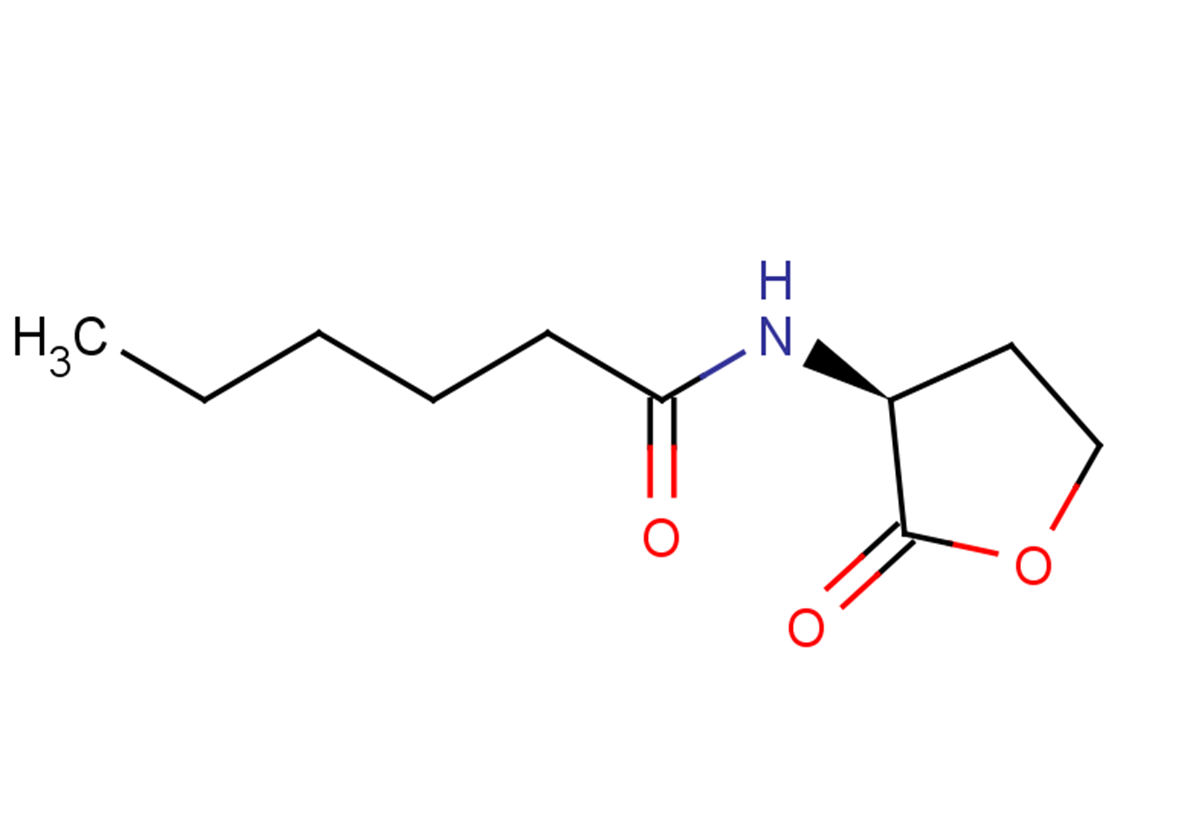
N-hexanoyl-L-Homoserine lactone
CAS No. 147852-83-3
N-hexanoyl-L-Homoserine lactone( C6-HSL )
Catalog No. M23633 CAS No. 147852-83-3
N-hexanoyl-L-Homoserine lactone, a small diffusible signaling molecule, is involved in controlling gene expression, affecting cellular metabolism, and quorum sensing.
Purity : >98% (HPLC)
 COA
COA
 Datasheet
Datasheet
 HNMR
HNMR
 HPLC
HPLC
 MSDS
MSDS
 Handing Instructions
Handing Instructions
| Size | Price / USD | Stock | Quantity |
| 5MG | 37 | In Stock |


|
| 10MG | 59 | In Stock |


|
| 25MG | 119 | In Stock |


|
| 50MG | 194 | In Stock |


|
| 100MG | 314 | In Stock |


|
| 200MG | 447 | In Stock |


|
| 500MG | 732 | In Stock |


|
| 1G | Get Quote | In Stock |


|
Biological Information
-
Product NameN-hexanoyl-L-Homoserine lactone
-
NoteResearch use only, not for human use.
-
Brief DescriptionN-hexanoyl-L-Homoserine lactone, a small diffusible signaling molecule, is involved in controlling gene expression, affecting cellular metabolism, and quorum sensing.
-
DescriptionN-hexanoyl-L-Homoserine lactone, a small diffusible signaling molecule, is involved in controlling gene expression, affecting cellular metabolism, and quorum sensing.
-
In Vitro——
-
In Vivo——
-
SynonymsC6-HSL
-
PathwayOthers
-
TargetOther Targets
-
RecptorOthers
-
Research Area——
-
Indication——
Chemical Information
-
CAS Number147852-83-3
-
Formula Weight199.25
-
Molecular FormulaC10H17NO3
-
Purity>98% (HPLC)
-
SolubilityDMSO: 30 mg/ml (150.60 mM); DMF: 30 mg/ml (150.60 mM); Ethanol: 30 mg/ml (150.60 mM); PBS (pH 7.2): 10 mg/ml (50.20 mM)
-
SMILESCCCCCC(N[C@@H](CCO1)C1=O)=O
-
Chemical Name——
Shipping & Storage Information
-
Storage(-20℃)
-
ShippingWith Ice Pack
-
Stability≥ 2 years
Reference



-
2,4,6-trichlorol-3-m...
2,4,6-Trichlorol-3-methyl-5-methoxy-phenol 1-O-β-d-glucopyranosyl-(1 → 6)-β-d-glucopyranoside is a chlorophenyl glycoside that is commonly found in the bulbs of Lilium brownie var. viridulum.
-
Norgestimate
Norgestimate is an acetylated progestinused in combination with ethinyl estradiol as an oral contraceptive.
-
Humanin (human)
Humanin, an anti-apoptotic peptide of 24 amino acids, is a Bax inhibitor. Humanin prevents the translocation of Bax from cytosol to mitochondria, blocks Bax from the inactive to active conformation. Humanin is a mitochondria-associated peptide with a neuroprotective effect against AD-related neurotoxicity. Humanin also improves overall insulin sensitivity in animal. Humanin are related to aging. Humanin analogue, in which the serine at position 14 is replaced by glycine, names HNG.



 Cart
Cart
 sales@molnova.com
sales@molnova.com


